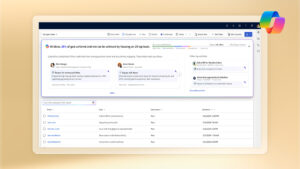
Transform talent acquisition and land top talent over competitors
The U.S. unemployment rate is at its lowest in nearly two decades, there’s a shortage of skilled candidates in numerous fields, and job hunters are savvier and more selective about who they’ll work for. After years of having the job market stacked in their favor, talent acquisition leaders and hiring managers now face stiff competition for talent. What does it take to land great talent these days? Well, you can start by building a talent acquisition process that’s both systematic and more engaging for candidates. Here are five general guidelines from the Five Steps to Landing Top Talent e-book that can improve your company’s hiring success.
1. Design an engaging candidate experience
Providing a great experience for your job candidates takes the art of diplomacy and the science of talent acquisition. You need to start with a clear understanding of the entire journey: From job discovery and application to offer acceptance and onboarding, it’s critical that you get it right every step of the way. During the interview stage, for example, ensure that everyone with skin in the game is on the same page and actively engaged. That includes talent acquisition leaders, who have a good sense of whether someone is a good cultural fit, and hiring managers, who know what it takes to perform a job effectively. Using scheduling, productivity, and collaboration tools can go a long way toward coordinating everyone’s schedules so you can focus on finalizing questions, putting your best foot forward for the prospect, and ensuring the candidate is the right fit for the role and your company.
2. Keep candidates informed
Job seekers don’t want to be kept in the dark. A survey by LinkedIn found that 94 percent of job candidates want to know how they did in their interview and what comes next. If there’s anything you can say about their last interview, your ideal candidate, or the timing of the next round of interviews, they’ll be genuinely grateful. Today’s top candidates expect to be coached for success during the process and look for companies that consistently communicate. This courtesy is also important for brand reputation. If they think you’re being cagey or withholding details, recruits might see that as a black mark against the company and pass their opinion along to friends or colleagues.
3. Know what questions to ask
You have a limited amount of interview time, so make your questions count. Avoid the usual platitudes about long-term goals and greatest weaknesses. Those questions don’t address the job’s practical considerations, determine how candidates solve problems, or divine whether they can work well with others even when co-workers don’t see eye-to-eye. Instead, ask questions about how they would handle an underperforming colleague or request an example of when they’ve gone the extra mile. Also, candidates are always curious about things like company culture and what’s expected of new employees, so allow time for them to ask a few questions of their own. The interview should be more of a candid conversation instead of an interrogation or test. Save skills questions for pre-interview assessments and focus interview time on determining mutual fit and discussing what success in the role looks like.
4. Listen and assess with care
There’s a lot riding on the candidate’s interview, so be deliberate when weighing their performance. Don’t get so distracted by their polished responses that you miss red flags such as negative comments about past colleagues, clients, or employers; taking sole credit for a team effort; or offering dodgy responses that don’t address your question. Also, interviews give you only part of the picture, so be sure to bring in other sources of information like online portfolios and social media profiles. That way, you can base your decision on more than just their resume, interview performance, and personal references.
5. Reject with respect and sincerity
Rejection is no fun, whether you’re the recruit or the talent acquisition leader. But although telling candidates they weren’t selected is one of the hardest parts of the hiring process, sending them a respectful and sincere communication will ensure they’ll consider your company in the future. Be sure to share positive feedback from the hiring team on the candidate’s strengths and ask for their candid feedback on what you can do better in the future. Ask them to join your career site, so they can become part of your talent pipeline, where you can recommend other roles that may be a better fit.
Finding the right candidate can be a challenge, but it’s important to take a long view. There’s no telling when someone you turned down today could become your number one choice for an opening tomorrow. That’s why it’s essential to track the careers of promising candidates and find out where they land. By following the guidelines above, and using a comprehensive hiring solution, you can more easily identify and attract promising candidates, and accelerate your company’s talent acquisition process.
[msce_cta layout=”image_center” align=”center” linktype=”blue” linkurl=”https://explore.dynamics.com/talent/talent-five-steps-to-landing-top-talent” linktext=”To learn more, download the Five Steps to Landing Top Talent. ” ][/msce_cta]




